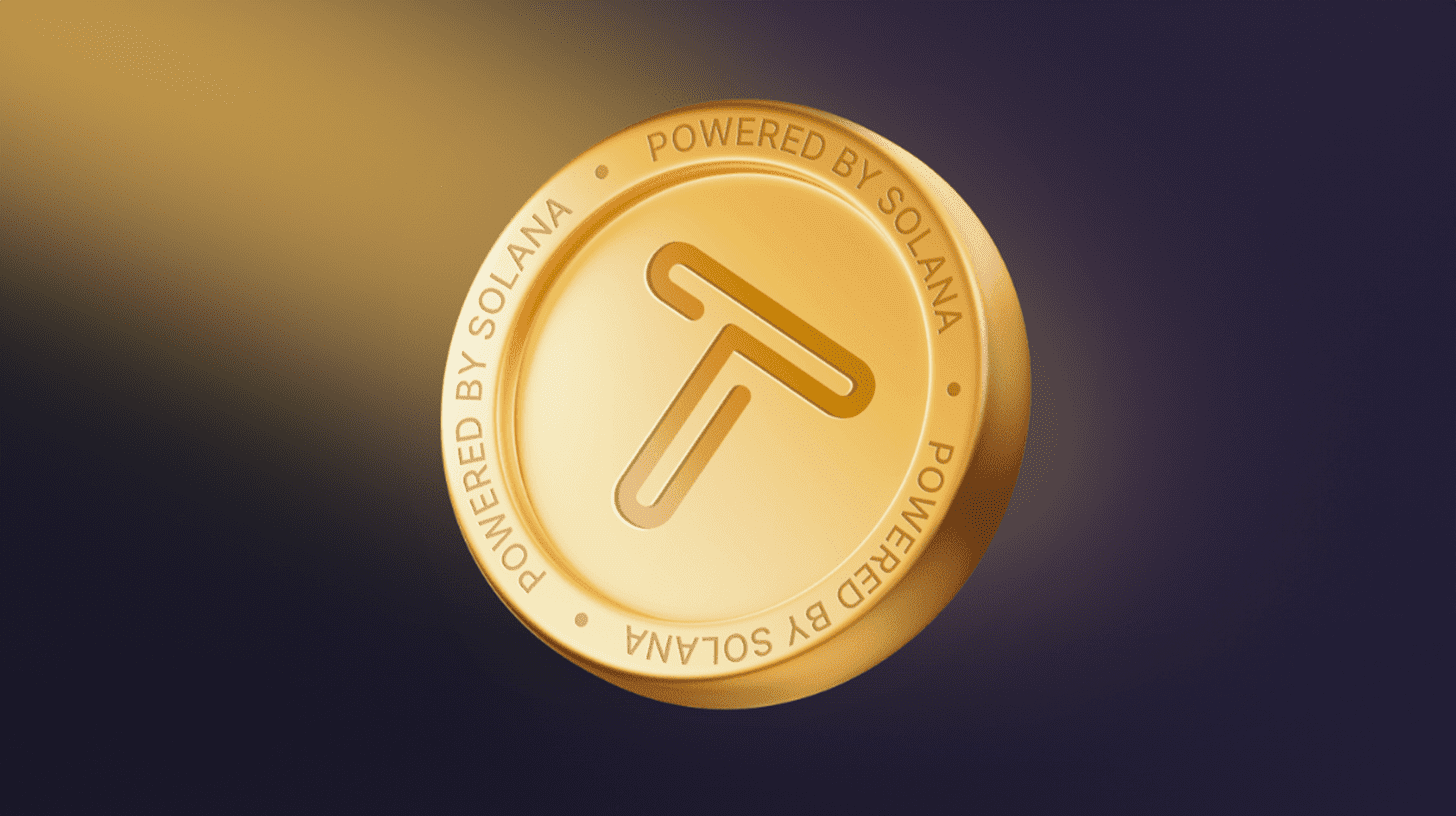The Rise of Crypto Games: A New Era of Gaming and Earning

The gaming industry has undergone tremendous transformation over the past few decades. From the early days of pixelated arcades to the immersive, high-definition worlds of today, gaming has continuously evolved, captivating millions across the globe. In recent years, a new paradigm has emerged, reshaping how we perceive and interact with games: the integration of blockchain technology, giving birth to the phenomenon known as crypto games.
Crypto games, also referred to as blockchain games, are revolutionizing the gaming landscape by introducing elements of decentralization, ownership, and real-world value into the virtual realms. Unlike traditional games where in-game assets are confined within the game’s ecosystem, crypto games enable players to truly own their digital items through the use of non-fungible tokens (NFTs) and cryptocurrencies. This blend of gaming and blockchain technology is not just a fleeting trend; it represents a significant shift towards a more inclusive and rewarding gaming experience.
Merging gaming with blockchain technology holds profound significance. It empowers players with real ownership of in-game assets, providing opportunities to trade, sell, and even earn through gameplay. This fusion enhances the gaming experience, creating new economic opportunities and fostering a sense of community and collaboration among players. As we delve deeper into the world of crypto games, it becomes evident that this new era of gaming and earning is poised to redefine the future of the industry.

What Are Crypto Games?
Crypto games, at their core, are digital games that utilize blockchain technology to provide players with verifiable ownership of in-game assets. These assets can include characters, items, currencies, and even virtual real estate. By leveraging the decentralized nature of blockchain, these games ensure that players have full control over their digital possessions, which can be traded or sold outside the game environment.
Blockchain technology, through the use of smart contracts and non-fungible tokens (NFTs), facilitates this ownership. NFTs are unique digital tokens that represent ownership of a specific item or piece of content. In crypto games, every in-game asset can be tokenized as an NFT, giving it real-world value and allowing it to be traded on various marketplaces.
Differences Between Traditional Games and Crypto Games
The primary difference between traditional games and crypto games lies in asset ownership and monetization. In traditional games, players spend money on in-game items, but these items are confined to the game’s ecosystem. Once purchased, these assets cannot be transferred, sold, or truly owned outside of the game’s environment. This often results in players investing significant amounts of money without any tangible returns.
In contrast, crypto games enable players to own their in-game assets fully. These assets are stored on the blockchain, independent of the game’s servers, meaning they can be traded, sold, or transferred at the player’s discretion. This ownership model opens up new avenues for monetization, allowing players to earn real-world income through their gaming activities.
Examples of Popular Crypto Games
Several crypto games have gained popularity, demonstrating the potential and appeal of this new gaming model. Some notable examples include:

Axie Infinity
A play-to-earn game where players collect, breed, and battle fantasy creatures called Axies. Each Axie is an NFT, and players can earn cryptocurrency by winning battles and completing quests.

Decentraland
A virtual world where players can buy, sell, and build on parcels of virtual land. Each piece of land is an NFT, and players can create and monetize their own virtual experiences.

CryptoKitties
One of the earliest examples of a blockchain game, where players collect, breed, and trade unique digital cats. Each CryptoKitty is an NFT, and the game was instrumental in popularizing the concept of crypto collectibles.

TapSwap
A tap-to-earn game integrated with Telegram, where players earn TAPS coins through simple tapping actions. The game combines engaging mechanics with the promise of real cryptocurrency rewards.

Hamster Kombat
A popular Telegram game where players start with a basic hamster character and progressively evolve it into a powerful CEO of a crypto exchange through continuous tapping. Players earn points by upgrading their hamster and completing various mini-quests.
These examples highlight the diversity and innovation within the crypto gaming space, showcasing how blockchain technology can enhance and expand the possibilities of gaming.

The Evolution of Gaming: From Play-to-Earn to Tap-to-Earn
The play-to-earn (P2E) model has revolutionized the gaming industry by allowing players to earn real-world value through their in-game activities. In traditional gaming, players invest time and money into games but rarely receive anything tangible in return. P2E games, however, enable players to earn cryptocurrencies and NFTs by completing tasks, winning battles, and achieving milestones within the game. This model not only provides financial incentives but also empowers players with true ownership of their digital assets.
In P2E games, players often need to make an initial investment to purchase characters or items that generate revenue. Games like Axie Infinity have popularized this model, where players breed and battle creatures called Axies to earn tokens that can be traded on cryptocurrency exchanges. The success of Axie Infinity and similar games has demonstrated the potential of P2E to create new economic opportunities for gamers around the world.
Introduction to the Tap-to-Earn Concept
Building on the success of the play-to-earn model, the tap-to-earn concept has emerged as a simpler and more accessible way for players to earn cryptocurrency. Tap-to-earn games streamline the earning process by allowing players to earn rewards through simple actions, such as tapping on the screen. These games are designed to be easy to understand and play, making them appealing to a broader audience, including those who may not have prior experience with cryptocurrencies or gaming.
Tap-to-earn games typically involve repetitive actions that generate in-game points or tokens, which can later be exchanged for real-world cryptocurrency. This model reduces the entry barrier for new players, as it does not require significant initial investments or complex strategies. Tap-to-earn games like TapSwap and Hamster Kombat have gained popularity for their engaging mechanics and promise of future cryptocurrency rewards.
How Tap-to-Earn Games are Changing the Gaming Industry
Tap-to-earn games are transforming the gaming industry by making cryptocurrency earning more accessible and enjoyable for a wider audience. These games leverage the simplicity of tap mechanics to attract casual gamers, who might find traditional P2E games too complex or time-consuming. The straightforward gameplay and potential for real-world earnings make tap-to-earn games an attractive option for both seasoned gamers and newcomers.
Moreover, tap-to-earn games are fostering new communities and driving engagement on social platforms like Telegram. The integration of blockchain technology in these games ensures transparency and security, which builds trust among players. As more people become familiar with the concept of earning cryptocurrency through gaming, the tap-to-earn model is likely to drive further innovation and adoption in the industry.
In summary, the evolution from play-to-earn to tap-to-earn represents a significant shift in the gaming landscape. By lowering the entry barriers and simplifying the earning process, tap-to-earn games are democratizing access to the benefits of blockchain technology and creating new opportunities for players to monetize their gaming experiences.

Key Features of Crypto Games
The key features of crypto games have transformed the gaming landscape, offering new opportunities and experiences for players. Below are some of the most significant aspects that set crypto games apart from traditional ones.
Integration with Blockchain Technology
The backbone of crypto games is blockchain technology, which provides a decentralized and secure framework for gaming. Blockchain ensures transparency and immutability, meaning that all transactions and ownership records are publicly verifiable and cannot be altered. This technology allows for the creation of a fair and trustless environment, where players can confidently engage in in-game transactions and asset management without the need for intermediaries.
Use of In-Game Cryptocurrencies
Crypto games utilize in-game cryptocurrencies as the primary medium of exchange. These digital currencies are earned through gameplay and can be used to purchase items, upgrades, and other in-game assets. Unlike traditional in-game currencies, crypto tokens have real-world value and can be traded on various cryptocurrency exchanges. This integration allows players to monetize their gaming efforts, converting in-game achievements into tangible financial rewards.
NFT Integration and Ownership of Digital Assets
One of the most revolutionary features of crypto games is the integration of non-fungible tokens (NFTs). NFTs are unique digital assets that represent ownership of specific items, characters, or pieces of content within a game. In crypto games, players can own, trade, and sell these NFTs, giving them real control over their in-game possessions. This ownership extends beyond the game itself, allowing players to transfer and monetize their assets in external marketplaces.
Decentralized Economies and Player-Driven Markets
Crypto games often feature decentralized economies where the value and supply of in-game assets are determined by the players. This player-driven market dynamic creates a vibrant ecosystem where supply and demand dictate prices, fostering a more organic and engaging economic environment. Players can engage in various economic activities such as trading, crafting, and speculating on the value of in-game assets. This decentralized approach not only enhances the gaming experience but also mirrors real-world economic principles, providing players with a deeper and more immersive interaction with the game.
The key features of crypto games — blockchain integration, in-game cryptocurrencies, NFT ownership, and decentralized economies — collectively redefine the gaming landscape. These innovations empower players with real ownership and financial opportunities, transforming gaming from a purely recreational activity into a potentially lucrative venture. As the industry continues to evolve, these features will likely play a central role in shaping the future of gaming.

The Role of Blockchain in Gaming
Blockchain technology is revolutionizing the gaming industry by introducing new levels of transparency, security, and decentralization. Here’s how it’s making a difference:
How Blockchain Ensures Transparency and Security
Blockchain technology is pivotal in ensuring transparency and security in the gaming industry. Each transaction and interaction within a blockchain-based game is recorded on a decentralized ledger, making it publicly verifiable and immutable. This transparency allows players to trust the system, knowing that all actions are recorded and cannot be altered or manipulated. The cryptographic principles underlying blockchain also enhance security, protecting users' data and digital assets from hacks and fraudulent activities.
The Importance of Decentralization in Gaming
Decentralization is a fundamental aspect of blockchain technology that significantly benefits the gaming industry. In traditional gaming models, central authorities, such as game developers or publishers, control all aspects of the game, including the economy and asset distribution. This centralized control can lead to issues such as unfair practices, censorship, and limited player autonomy. Blockchain's decentralized nature removes these intermediaries, giving players more control and ownership over their in-game assets and experiences. This shift empowers players, fostering a more democratic and participatory gaming environment.
The Benefits of Using Blockchain for In-Game Transactions and Asset Management
Blockchain technology offers several advantages for in-game transactions and asset management:
- Ownership and Interoperability
Blockchain allows players to truly own their in-game assets, represented as non-fungible tokens (NFTs). These assets are stored on the blockchain, independent of the game itself, enabling players to transfer, sell, or trade them across different platforms and games.
- Secure Transactions
Blockchain's decentralized ledger ensures that all transactions are secure and transparent. This security is crucial for in-game economies, where players can buy, sell, and trade digital assets without fear of fraud or theft.
- Reduced Costs
By eliminating intermediaries, blockchain can reduce transaction fees and other costs associated with traditional payment systems. This cost-efficiency benefits both players and developers, making in-game transactions more accessible and profitable.
- Enhanced Gameplay
Blockchain technology can introduce innovative gameplay mechanics, such as play-to-earn and tap-to-earn models, where players are rewarded with cryptocurrency for their in-game achievements. These models create new economic opportunities and add value to the gaming experience.
Blockchain technology plays a crucial role in modern gaming by ensuring transparency, enhancing security, and decentralizing control. Its application in in-game transactions and asset management offers numerous benefits, transforming how players interact with and derive value from their gaming experiences.

Challenges and Opportunities
The crypto gaming industry is burgeoning with potential, yet it faces several challenges that need to be addressed to realize its full potential. Here are some of the main challenges and opportunities in this dynamic space.
Challenges Faced by Crypto Games
Crypto games, despite their innovative potential, grapple with several challenges:
- Scalability
One of the primary challenges is scalability. As the number of players increases, the demand on blockchain networks grows, leading to slower transaction times and higher fees. This can hinder the gaming experience and limit the scalability of popular games.
- Security
While blockchain technology is inherently secure, the surrounding infrastructure, such as wallets and exchanges, can be vulnerable to hacks and fraud. Ensuring comprehensive security across all aspects of crypto gaming is crucial to building player trust.
- Regulatory Issues
The regulatory landscape for cryptocurrencies and blockchain technology is still evolving. Uncertainty and varying regulations across different jurisdictions can pose challenges for game developers and players, potentially stifling innovation and adoption.
Opportunities for Growth and Innovation in the Crypto Gaming Space
Despite these challenges, the crypto gaming industry holds immense opportunities for growth and innovation:
- Enhanced Player Engagement
Crypto games can leverage blockchain technology to create more engaging and rewarding experiences. Features such as true ownership of digital assets, decentralized economies, and play-to-earn models can attract and retain players.
- Cross-Platform Integration
The interoperability of blockchain assets can enable seamless integration of in-game assets across different games and platforms. This cross-platform functionality can enhance the gaming experience and create new opportunities for collaboration and monetization.
- New Economic Models
The ability to earn real-world value through gameplay can revolutionize the economic models of games. Crypto games can introduce innovative revenue streams for both players and developers, fostering a more inclusive and participatory gaming ecosystem.
- Technological Advancements
Ongoing advancements in blockchain technology, such as layer 2 solutions and more efficient consensus mechanisms, can address scalability issues and improve the overall performance of crypto games.
Predictions for the Future of Crypto Games
The future of crypto games looks promising, with several trends likely to shape the industry:
- Mass Adoption
As blockchain technology becomes more mainstream, we can expect a surge in the adoption of crypto games. Improved scalability and user-friendly interfaces will make these games more accessible to a broader audience.
- Integration with Metaverse
The convergence of crypto games with the metaverse—virtual worlds where users can interact, socialize, and transact—will create immersive and interconnected experiences. This integration will further blur the lines between the virtual and real worlds.
- Innovative Game Mechanics
The use of decentralized technologies will inspire new game mechanics and genres. Developers will experiment with decentralized governance, player-driven economies, and unique NFT applications, leading to innovative and diverse gaming experiences.
- Increased Regulation
As the industry grows, it will attract more regulatory scrutiny. Clear and consistent regulations will be necessary to protect players and ensure fair play while fostering innovation and growth in the industry.
While the crypto gaming industry faces significant challenges, the opportunities for growth and innovation are vast. By addressing scalability, security, and regulatory issues, the industry can unlock its full potential and usher in a new era of gaming that is more engaging, rewarding, and inclusive.

Conclusion
The rise of crypto games has ushered in a new era of gaming, where players can earn real-world value through their in-game achievements. By integrating blockchain technology, these games have introduced unprecedented levels of transparency, security, and true ownership of digital assets.
Crypto games are transforming the gaming landscape by integrating blockchain technology, which offers transparency, security, and true ownership of digital assets. The evolution from play-to-earn to tap-to-earn models has broadened the appeal of crypto games, making them accessible to a wider audience. Popular games like Axie Infinity, Decentraland, TapSwap, and Hamster Kombat showcase the innovative potential and diverse applications of blockchain in gaming.
The potential of crypto games to revolutionize the gaming industry lies in their ability to offer real-world value through in-game achievements. By allowing players to earn, trade, and truly own digital assets, crypto games create new economic opportunities and foster a more engaging and rewarding gaming experience. This shift challenges traditional gaming models and encourages developers to explore new ways to integrate blockchain technology.
As the crypto gaming industry continues to evolve, it is poised to redefine the future of gaming and earning. With advancements in blockchain technology and growing adoption, crypto games will become more sophisticated and accessible. The integration of decentralized economies, NFTs, and innovative gameplay mechanics will create immersive experiences that blur the lines between the virtual and real worlds.
The journey of crypto games is just beginning, and their impact on the gaming industry will be profound. As more players and developers embrace this new paradigm, we can expect to see a dynamic and inclusive gaming ecosystem that offers endless possibilities for creativity, collaboration, and financial empowerment. The future of gaming and earning is bright, and crypto games are at the forefront of this exciting transformation.
